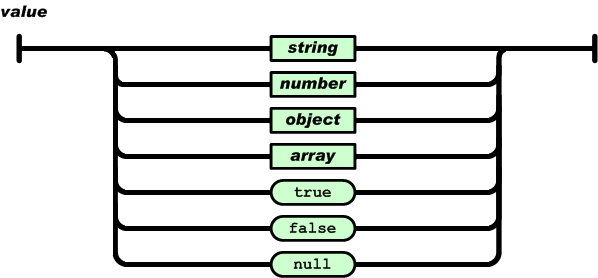
At work, I recently wanted to visualize how we annotated documents that we store as JSON in Elasticsearch. We annotate substrings with different codes, and I wanted to show those codes using colors in a terminal. This basically boils down to outputting JSON with ANSI escape codes. The easier part was inserting color codes inside the strings. But once that was done, I could not simply print the resulting JSON, because the escape codes would be escaped, not interpreted in my terminal!
In other words, I had to write a JSON encoder that would look exactly like a JSON encoder, except that it would not escape anything. (Note that this requires trusting the input.)
The interesting part was indentation: I wanted the result to be
indented with two spaces at each level, as if I had used
json.dumps(indent=2). Printing [1, [2, 3], 4] should give this:
[
1,
[
2,
3
],
4
]
When I looked at the wanted output above, I was tempted to print line by line, prepending each value with the correct output. It did not really go well, and after a few special cases I gave up and checked how CPython did it.
Their algorithm, which I ended up adopting, is more natural for a recursive solution. The key observation is that you only have two types of JSON objects that affect spacing: object (dict) and array (list and tuple). If you handle them correctly, the other ones can simply be added to the output without any spaces.
So, for lists, you need to output:
- the opening
[plus the correct indentation until the first item, - all items separated by commas and indentation,
- the indentation between the last item and
].
You don't need to worry about printing the items themselves: just call your function recursively! Here is how it looks like with ints and lists:
def output_unescaped_json(value, *, indent=0):
out = ''
next_indent = indent + 2
if isinstance(value, int):
out += str(value)
elif isinstance(value, list):
# opening [ and indentation until first item
out += '[\n' + ' ' * next_indent
# each item separated by commas and indentation
out_items = [
output_unescaped_json(item, indent=next_indent)
for item in value
]
sep = ',\n' + ' ' * next_indent
out += sep.join(out_items)
# indentation between the last item and ]
out += '\n' + ' ' * indent + ']'
else:
assert False, type(value)
return out
As with textbook recursive algorithms, it is elegant because you're
only solving one problem at a time, but it can be tricky to get to the
solution, convince you that it works, and debug it. If you want to
make sure you fully understand what is going on, try working out the
dictionary case ({'key': 'value'}).
You may be wondering: why is this a recursive algorithm? This must mean it's not pythonic, right? While it would be possible to rewrite this as an iterative algorithm, it's still going to traverse the whole tree, and the iterative algorithm will only be harder to read for marginal gains, and this is the kind of optimization that CPython avoids doing. And if your JSON is so deep that you exceed the recursion limit, you have other problems to solve first. :)
However, there is an obvious optimization that I left out: using
yield and yield from and build the resulting string with a single
join call. But that requires adding another function for the join
call. I decided to keep things simple here.
I'm on Mastodon!